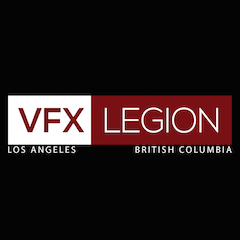The film and television industry's top priority since the onset of the COVID-19 pandemic has been the health of its employees. Companies have moved quickly to find ways to adapt in-house staff to work-from-home scenarios that minimize health risks. But that’s how VFX Legion has worked since 2013.
A pioneer of the collaborative remote business model, the company has a collective of more than one hundred artists working from the safety of their homes already in place. The LA-based company, with a satellite studio in B.C., continues to provide feature films and episodic series with high-quality, cost-effective visual effects.
 Legion’s remote pipeline allows it to remain competitive as visual effects work is driven to regions offering tax incentives. Not limited by a finite number of workstations or proximity to a studio, the company has the scalability that comes with its ability to work with a scattered pool of experienced artists as an integrated team.
Legion’s remote pipeline allows it to remain competitive as visual effects work is driven to regions offering tax incentives. Not limited by a finite number of workstations or proximity to a studio, the company has the scalability that comes with its ability to work with a scattered pool of experienced artists as an integrated team.
Founder James David Hattin is the architect of VFX Legion's remote pipeline. Built from the ground up, it integrates the latest technology with innovative, off-label collaborative capabilities to provide seamless remote workflow. Launched in 2013, the company brings together a diverse team of specialized home-based talent in a transparent virtual work environment with the connectivity to efficiently manage the complexities of a visual effects production process with a daunting number of moving parts.
According to Hattin, while Legion broke with the traditional in-house approach to visual effects, working with the visual effects house is anything but disruptive. For clients, the experience is indistinguishable from conventional studios with artists working in-house.
"I don't think most of our clients are even aware of our remote approach," says Hattin. "What keeps them coming back is the trust we’ve earned. They know they can rely on our ability to deliver large shot counts of photo-real visual effects on tight budgets and consistently meet deadlines while elevating production value with sheer technical ingenuity."
Since opening its doors, every high-profile episodic series that discovered VFX Legion – including Madam Secretary, Scandal, and How to Get Away with Murder – has returned to work with the company season after season, right through series finales. It took Hattin more than a year to develop and build a remote pipeline that taps the potential of digital connectivity to meet the challenges that complex visual effects present.
“Working remotely to produce visual effects presents unique challenges,” says Hattin. “It takes large teams of artists with specialized disciplines to create multiple components for a shot that fits together seamlessly in composite, blend into a computer-generated environment, and produce the mix of effects that augment footage.”
In recent years an increasing number of visual effects companies have come to realize that digital connectivity is the future of the industry. Many are taking advantage of virtual space and integrating digital capabilities into their workflow. However, with investments in facilities built around expensive infrastructures designed to connect in-house teams, and the stigma associated with working remotely, there hasn't been much incentive to build sophisticated pipelines. Despite the industry’s general resistance, a new generation of remote-based visual effects studios is beginning to emerge.
"The time we invested upfront, developing the structure, methodology, procedures, and other essential elements, was well spent,” says Hattin. “It allowed us to build a ground-breaking state-of-the-art remote pipeline and hone our approach and workflows while vetting talent and growing a large and diverse collective of experienced artists.”
VFX Legion www.VFXLegion.com
